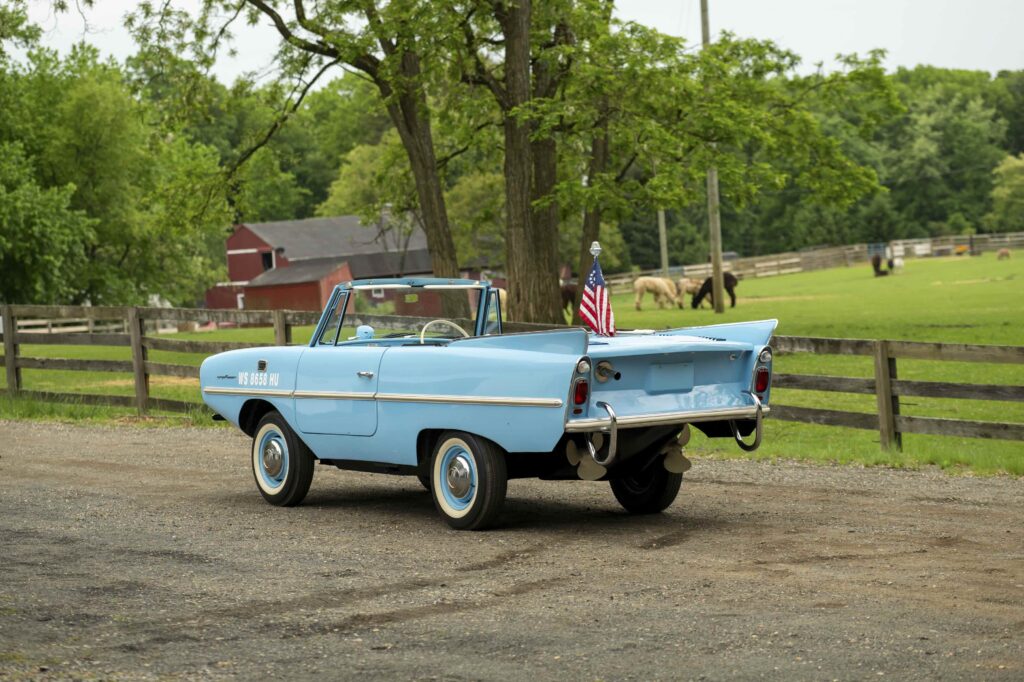Welcome to the world of the Amphicar, an amphibious car that made more history than miles. Seat belts fastened, goggles on!
Text: Gerben Bijpost Photography: Corey Escobar ©2025 Courtesy of RM Sotheby's
The Amphicar Model 770 was the brainchild of German engineer Hans Trippel. Not just any inventor: autodidact Trippel (1908-2001) worked on amphibious vehicles for the German army during World War II, was a supporter of the Nazi regime, a member of the quasi-military SA and active in the SS, took over the management of the Bugatti factory in Molsheim (FR) during the war, was sentenced to five years in prison by the French authorities as a war profiteer after the German defeat in 1945, was released after three years and resumed his career as a car designer.
His record includes the Troll (Noorwegen's first and unsuccessful venture into the car industry), as well as the wing door, the patent for which he sold to Mercedes-Benz, which then applied it to the famous 300SL Gullwing.
Its best-known design, however, is this Amphicar 770, the only amphibian car ever mass-produced for private use. It was produced between 1961 and 1968 in the German Hanseatic city of Lübeck and assembled in Berlin. The name '770' stood -quite optimistically- for 7 knots (about 13 km/h) on the water and 70 miles per hour (112 km/h) on the road. In reality, the car reached a maximum of 11 km/h in the water and tapped that 112 km/h top speed at most when driving down a hill and also with a tailwind.
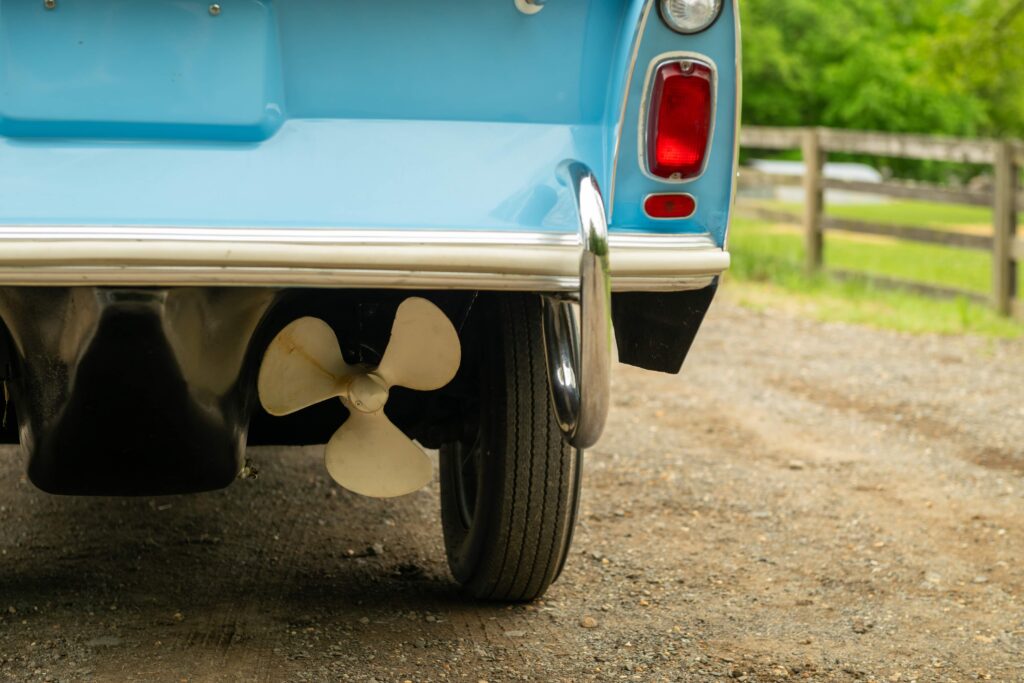 Wet suit
Wet suit
In appearance, Amphicar was a cross between a Volkswagen Beetle, a Fiat 500 and a bathtub on wheels. It was rear-wheel driven by a British four-cylinder Triumph Herald engine and had a Hermes gearbox. At the back were two plastic propellers that propelled the vehicle in the water. To enter the water, you had to lock the doors with extra levers - these made it somewhat waterproof. You then activated the screws via a second gear lever and drove into the water. The steering in the water? That was via the front wheels that acted as rudders. The result: cumbersome, sluggish and by no means accurate. By the way, despite these poor sailing characteristics and seaworthiness, an Amphicar managed to cross the English Channel in 1962.
The Amphicar had been approved by both the US Highway Administration and the Coast Guard. That meant: approved as both a car and a boat. But it yielded on both fronts. On the road, it was heavy (over 1,000 kg), slow and noisy. In the water, it was fragile, slow and, if possible, even noisier. The propellers were easily damaged and you needed constant maintenance: the Amphicar had 13 different lubrication points that required regular oil. Forget one and you risked a wet suit. So whoever chose this vehicle was not only a lover of technical curiosities, but certainly also an optimist.
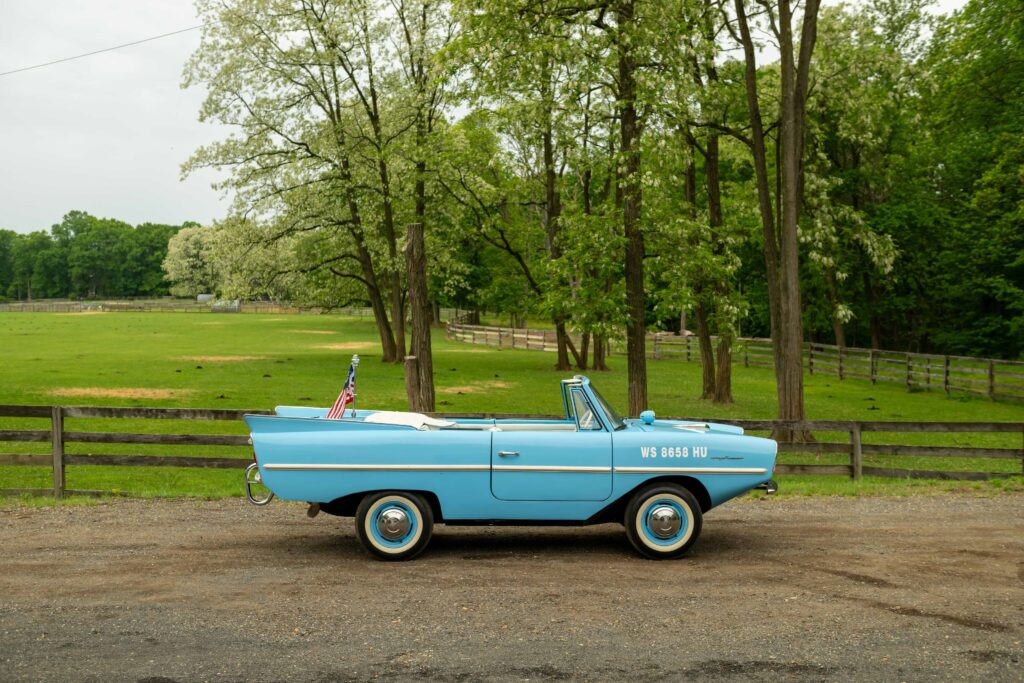 LBJ's amphibious practical joke
LBJ's amphibious practical joke
Someone who apparently possessed those traits -and gave the Amphicar great fame- was US President Lyndon B. Johnson. On his ranch in Texas, he owned one, which he used for a special kind of presidential humour. According to biographer Robert Dallek, Johnson liked to drive unsuspecting guests in his car towards the lake, only to shout in complete panic, "The brakes are broken! We're going in!" What followed was a theatrical splash into the water after which he drifted on laughing, while his guests sat recovering from the shock. The Amphicar in question is said to still be owned by the Johnson family.
It is perhaps no coincidence that it was an American president who had fun with this car, because although built in Germany, the Amphicar mainly found a market in the United States. Of the 3,878 examples produced, the vast majority went to America. There, it apparently fitted in better with the culture of 'bigger is always better', where extravagant vehicles like this can also count on more enthusiasm. The Lagoon Blue Amphicar you see on these pages (and offered for sale through Sotheby's) is not an American, by the way, but a very rare right-hand drive example and is therefore considered a valuable collector's item.
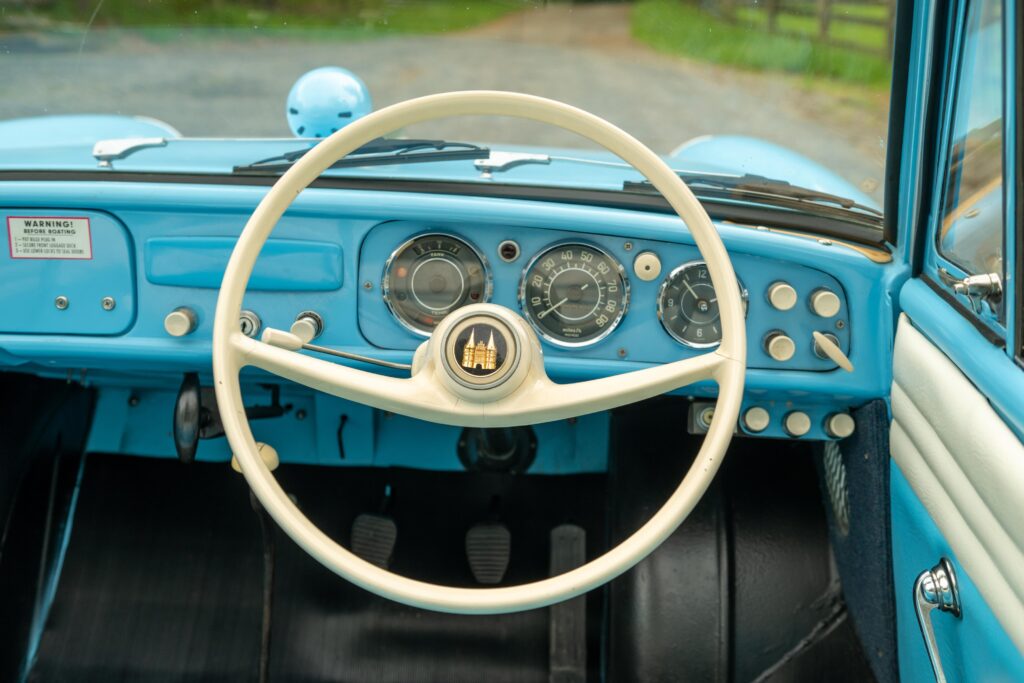 No longer welcome
No longer welcome
Today, about five hundred Amphicars are still registered in the US. They regularly appear at events and in Florida, annual Amphicar parades are even held, where dozens of them drive into the water at the same time. This happens in more modest numbers closer to home too, but you won't come across it in the Netherlands anytime soon, as an iconic tradition came to an end in August 2024. One hundred amphibious vehicles - mostly Amphicars - then sailed through Amsterdam's canals as part of an amphibious car parade that takes place in a different country every year. Amsterdam has organised the event four times since the parade started in 1987, but this was the very last time due to new regulations: from 2025, only emission-free boats and vehicles are welcome on Amsterdam's waterways. Ironically, it was also regulations that ended production of the Amphicar in 1968. New safety and emission standards in the US made the model uneconomic at the time.
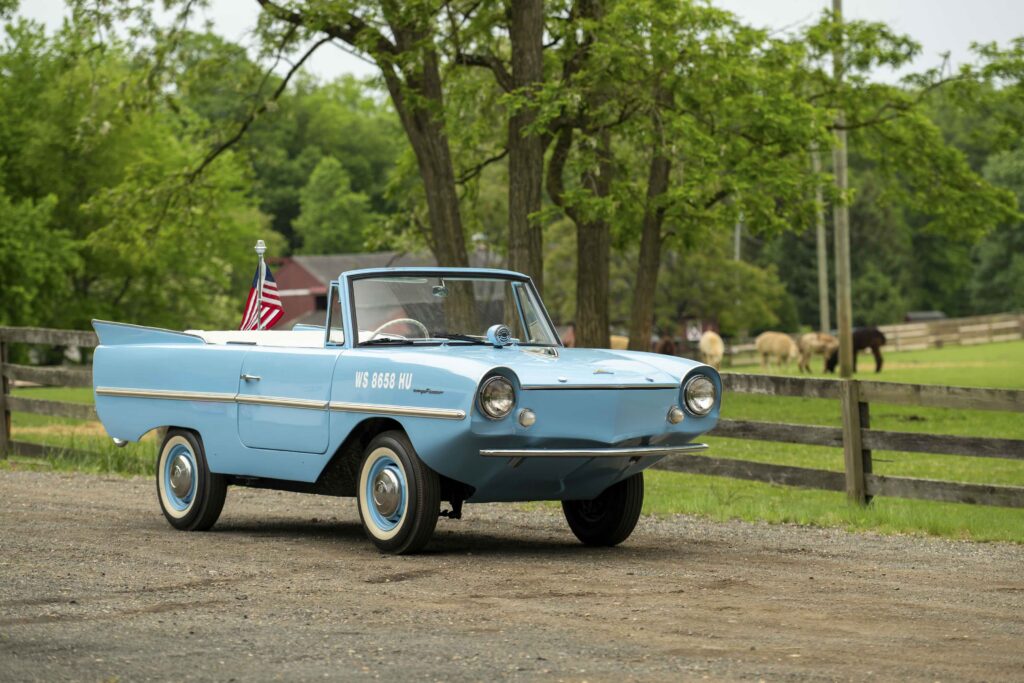 Uniqueness, doltiness, shot-through ambitions, the stories about President Johnson, appearances in the Avengers series (episode Castle De'ath), not to mention in Bassie and Adriaan (episode The lost crown)... making the charming Amphicar a world-famous trolley. It was not a sales hit, not a speed monster and, in fact, not even practically useful. But if there is ever an award for the 'most ambitious failed means of transport of all time', the Amphicar will undoubtedly be on the podium. And maybe even in the middle...
Uniqueness, doltiness, shot-through ambitions, the stories about President Johnson, appearances in the Avengers series (episode Castle De'ath), not to mention in Bassie and Adriaan (episode The lost crown)... making the charming Amphicar a world-famous trolley. It was not a sales hit, not a speed monster and, in fact, not even practically useful. But if there is ever an award for the 'most ambitious failed means of transport of all time', the Amphicar will undoubtedly be on the podium. And maybe even in the middle...



